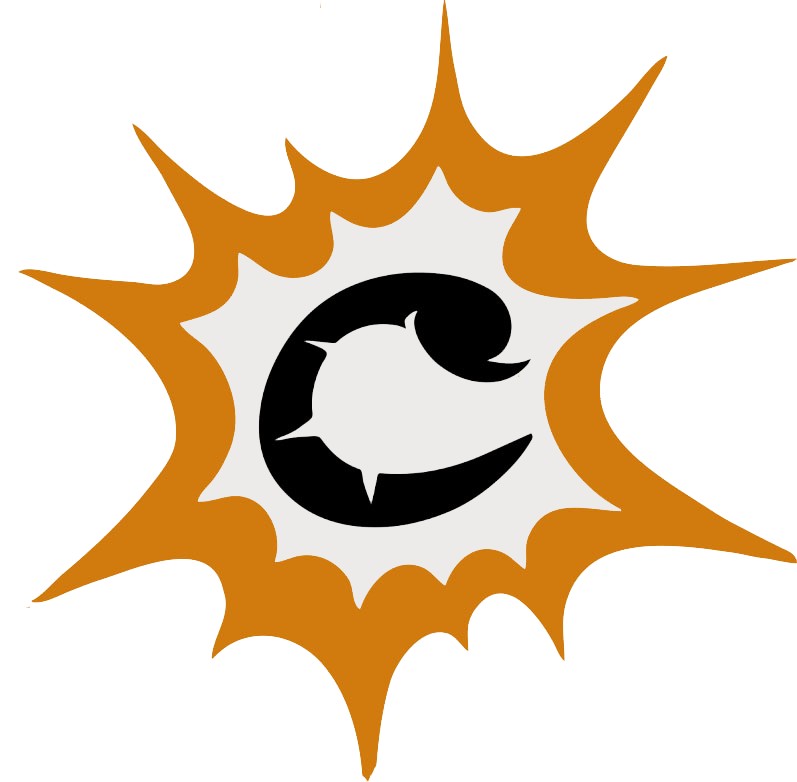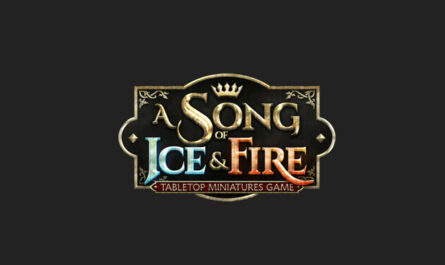During a game of A Song of Ice & Fire (ASOIAF), you and your opponent take turns activating your units, each activation granting you one action. These actions are crucial for achieving your objectives. The more actions you have during a game, the more opportunities you get to fulfill these objectives. If you can generate more actions than your opponent, you theoretically have a higher chance of winning the game. This tactical concept is called “action advantage,” and it deserves some explanation.
Actions: A Matter of Perspective
When a combat unit activates, it can perform one of the following actions:
- Maneuver
- March
- Retreat
- Attack
- Charge
To understand the concept of action advantage, you need to think of actions as transactions. Your unit must “pay” something to receive something in return. For example, it “pays” an action to be allowed to maneuver. Since a transaction is an exchange, it works both ways: a movement or an attack equals an action. If a Tactics card allows a unit to perform an attack action, it essentially grants that unit an additional action. Following so far?
You should be because ain’t no rocket science.
What Is Action Advantage?
Action advantage is the process by which a player effectively gains more actions than their opponent. In other words, action advantage occurs when there is a favorable imbalance between the number of actions you have and the number your opponent has. To shift the balance in your favor, you have two levers:
- Increasing your pool of actions
- Reducing your opponent’s pool of actions
Increasing Your Pool of Actions
Through Activation Count

If your army list includes 8 activations, you will theoretically have access to 48 actions in a 40-point game (8 activations x 1 action x 6 rounds). If your opponent only has 7 activations, they start their first round with a 6-action deficit compared to your army. That’s potentially 6 extra movement or attack actions for you! However, as the game progresses, both players will suffer losses, and the balance of actions will shift back and forth. Since this gap fluctuates throughout the game, it’s best to diversify your sources of action advantage.
Through Combat Unit Abilities
Unit abilities are excellent tools for generating action advantage, as some of them grant free actions. Take the Lannister Halberdiers, for example:
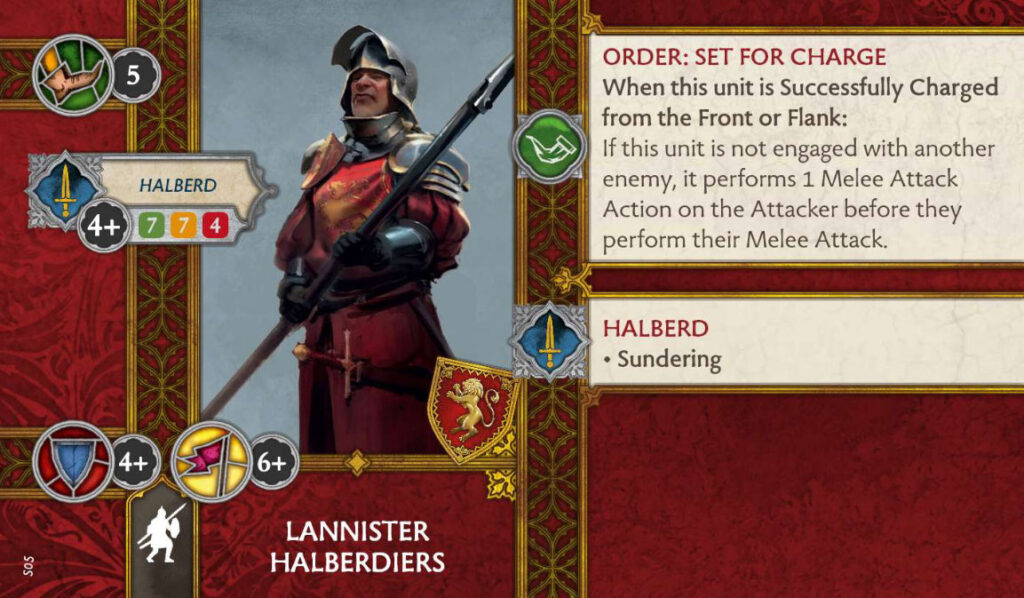
Their order, “Set for Charge,” allows them to react to an enemy charge with a Melee Attack (under specific conditions). This ability enables the Halberdiers to perform up to two actions per round, giving them a one-action lead over the opponent (or reducing their action deficit accordingly).
This order could help you eliminate an enemy unit during your opponent’s turn and then move toward an objective during your own turn. Normally, this sequence of actions would have cost two activations over two game rounds.
Through Tactics Cards
Some Tactics cards grant free actions and are thus your third key source of action advantage. Consider the examples of Robb Stark’s Sudden Retreat and Vargo Hoat’s Careless Aggression.

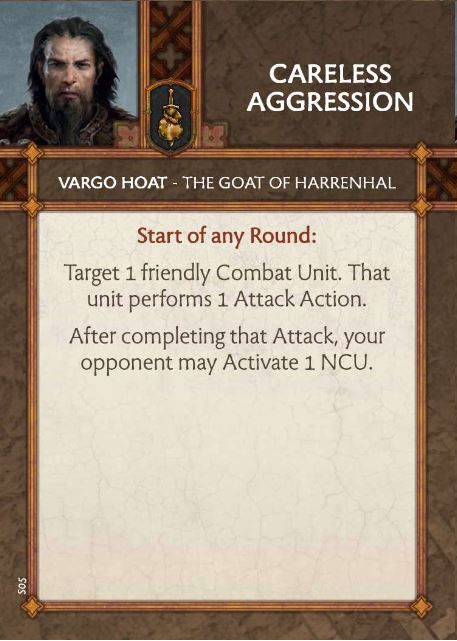
Be cautious with Vargo Hoat’s card, especially its second paragraph. It states that your opponent can immediately activate a Non-Combat Unit (NCU). In other words, you gain an action but immediately grant one to your opponent. This means that Careless Agression does not actually provide action advantage.
Through Attachments
Attachments also play a significant role in the race for actions. I could list many examples, such as Theon Greyjoy’s “Swift Strike” order, but that would be redundant. You get the core idea: free actions are key.
Now, let’s take the action advantage concept even further and discuss the Raider Captain attachment.
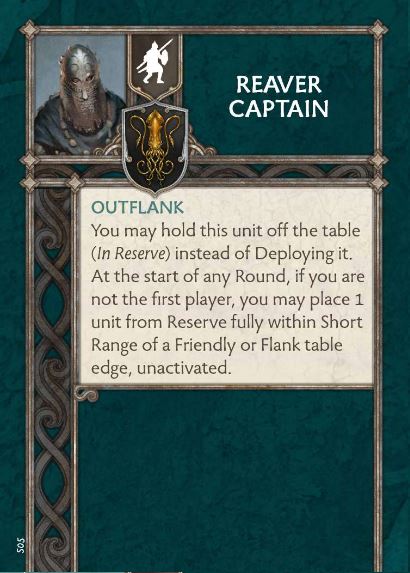
To fully grasp action advantage, you must learn to read between the lines of abilities. For example, if a movement equals an action, then any deployment far from your starting zone can be considered free movement actions.
Thus, the “Outflank” ability of the Raider Captain is an excellent source of action advantage—provided you use it wisely. Don’t be misled by the apparent downside of deploying your unit later. At first glance, it may seem like you’re falling behind in activations, thus losing ground in the action advantage race. However, a deeper analysis proves the opposite! Why? It’s simple: how many actions would it take to cross the battlefield with a unit? At least 3 or 4, depending on obstacles (both living and inanimate). Deploying a unit with a Raider Captain far ahead in round 1 or 2 is equivalent to “teleporting” it. You immediately gain a 2- or 3-action lead over your opponent! Ah, the Greyjoys… They do not sow.
Reducing Your Opponent’s Pool of Actions
If you can’t generate extra actions for yourself, there is another solution: reducing your opponent’s pool of actions! Remember, the goal is to widen the gap between you and your opponent, not necessarily to amass an astronomical number of actions.
Currently, in ASOIAF, the only way to reduce enemy activations is to eliminate opposing units. This may be obvious, but it bears mentioning. The fewer units your opponent has, the fewer activations—and thus the fewer actions—they will have. If you eliminate a unit in round 1, you “deny” them all the actions that unit would have generated over the next five rounds, which amounts to 5 actions.
What About Non-Combat Units (NCUs)?
Since the tactics board and NCU management are a separate game within the game, it’s best to discuss them in a dedicated article. So stay tuned for part 2, where I will cover how your NCUs help you generate more actions! Until then…

Need advice building your army list?
Join your country’s A Song of Ice and Fire Discord community and get answers to your questions.
